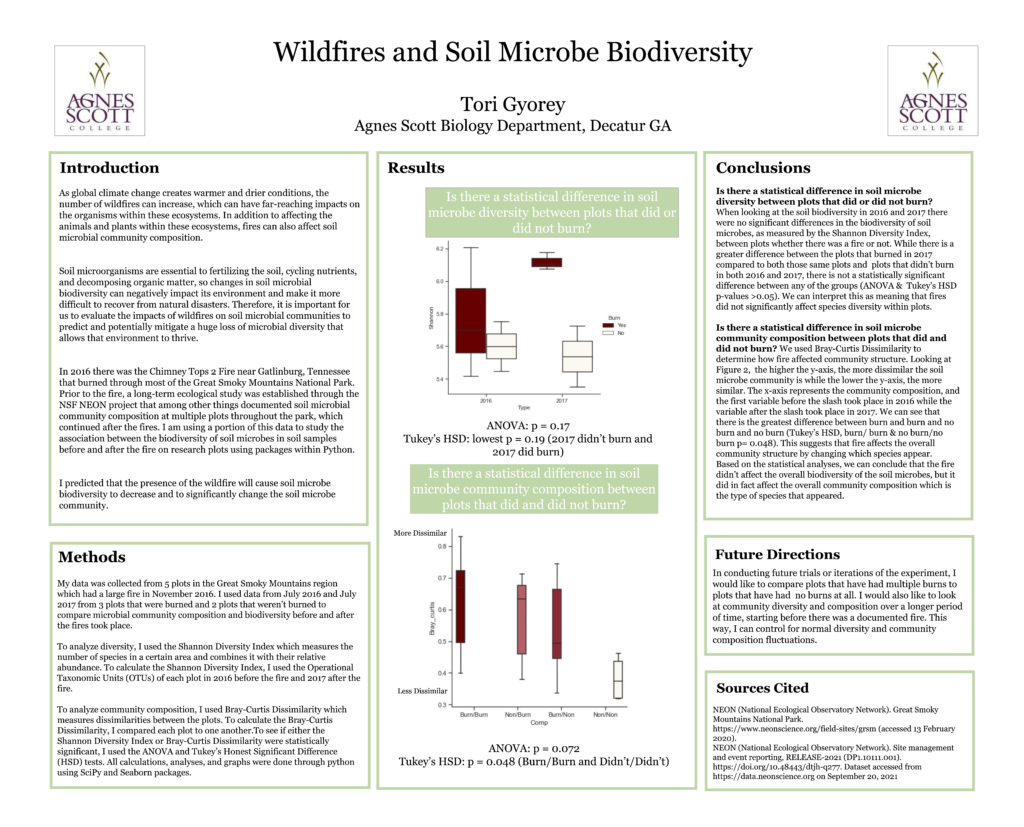Wildfires and Soil Microbe Biodiversity
Tori Gyorey, Agnes Scott College ‘22
tgyorey@agnesscott.edu
As global climate change creates warmer and drier conditions, the number of wildfires can increase, this can have far-reaching impacts on the organisms within these ecosystems. In addition to affecting the animals and plants within these ecosystems, fires can also affect soil microbial community composition. In 2016 there was the Chimney Tops 2 Fire near Gatlinburg, Tennessee that burned through most of the Great Smoky Mountains National Park. Prior to the fire, a long-term ecological study was established through the NSF NEON project that among other things documented soil microbial community composition at multiple plots throughout the park, which continued after the fires. I am using a portion of this data to study the association between the biodiversity of soil microbes and fire. I am comparing the soil microbial community in soil samples before fire and after on research plots that burned through programming language Python. I predict that the presence of the wildfire will cause soil microbe biodiversity to decrease. I am also interested in looking at how severity might impact the biodiversity of soil microbial communities. Soil microorganisms are essential to fertilizing the soil, cycling nutrients, and decomposing organic matter, so changes in soil microbial biodiversity can negatively impact its environment and make it more difficult to recover from natural disasters. Therefore, it is important for us to evaluate the impacts of wildfires on soil microbial communities to predict and potentially mitigate a huge loss of microbial diversity that allows that environment to thrive.

